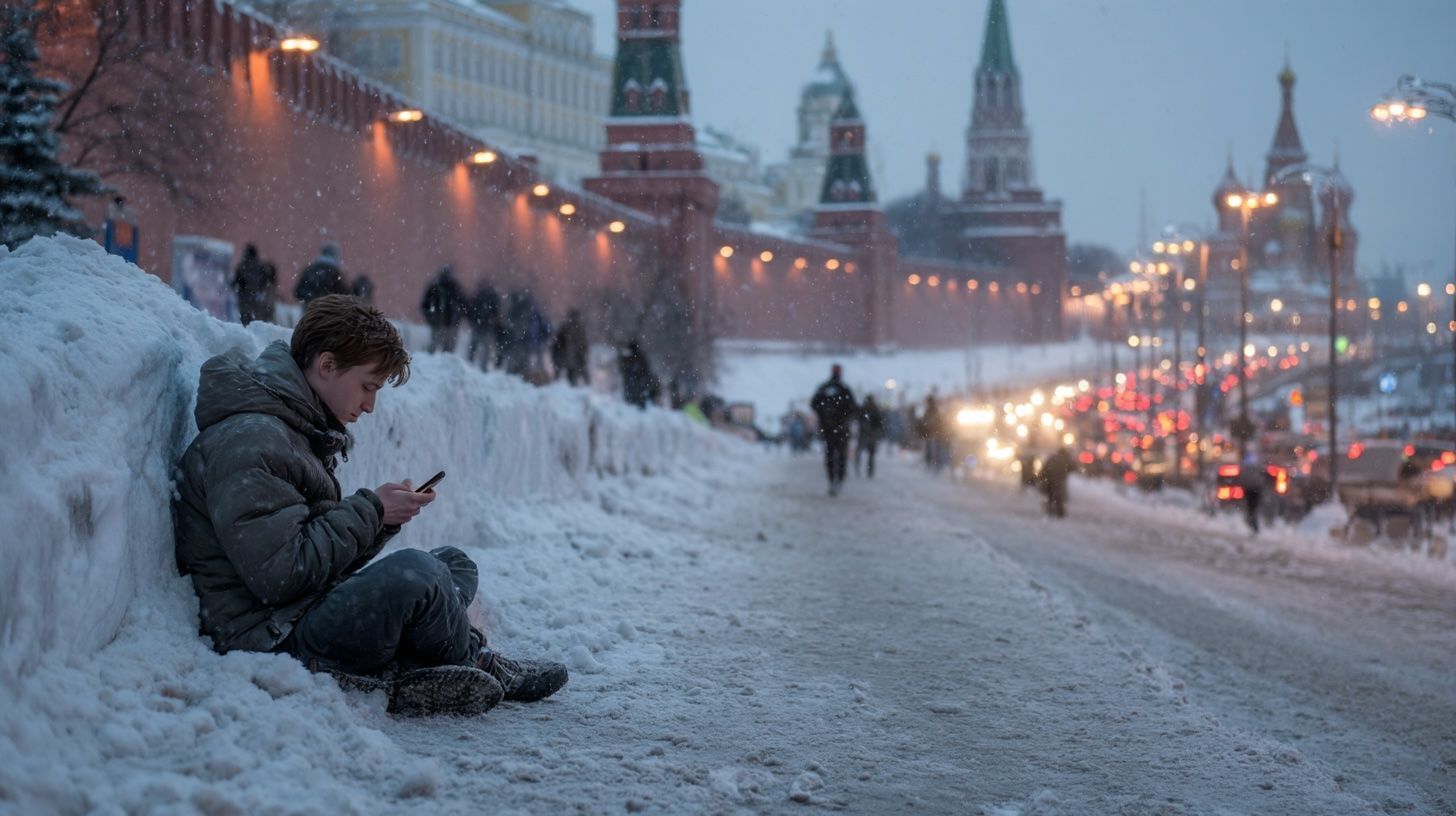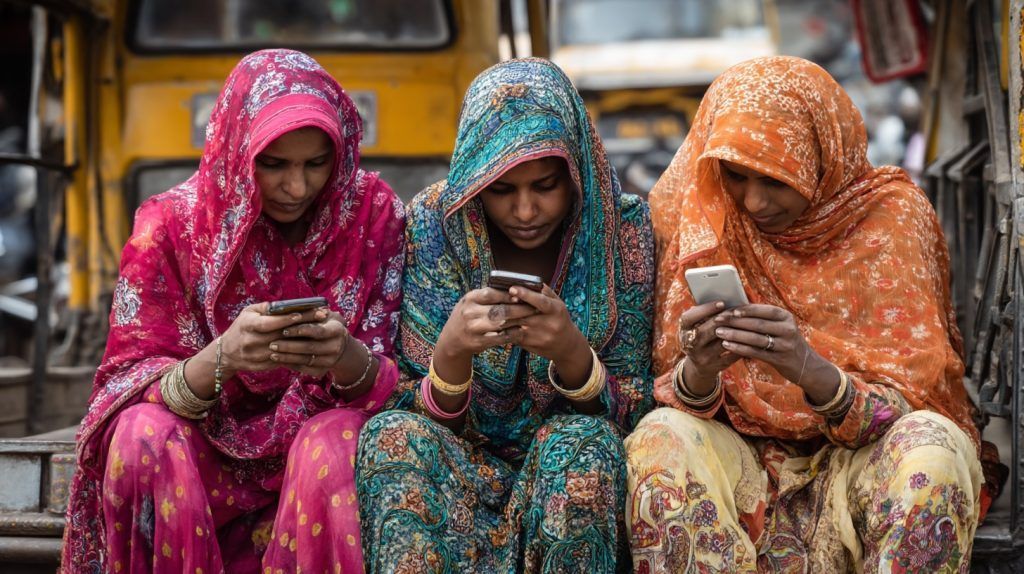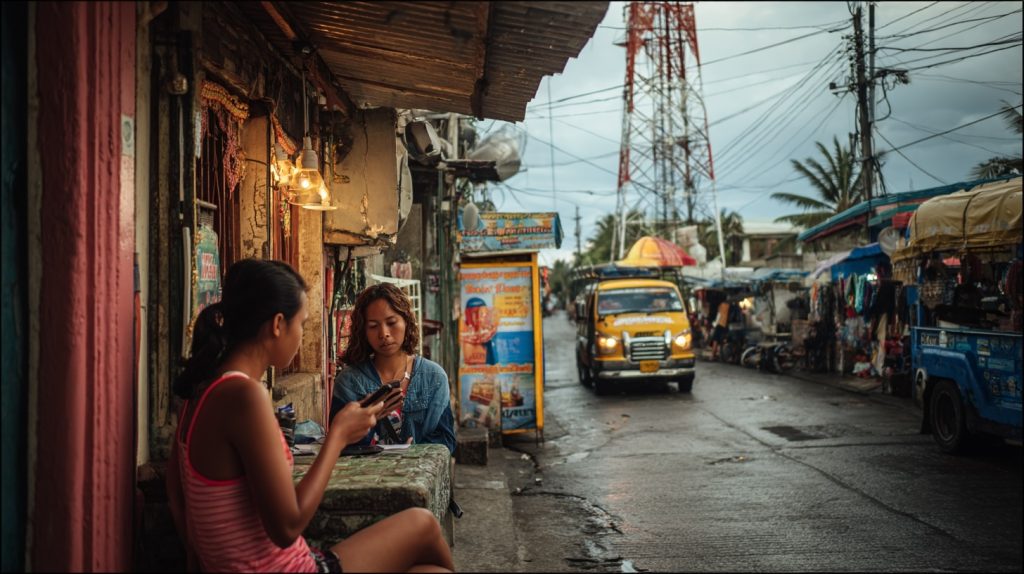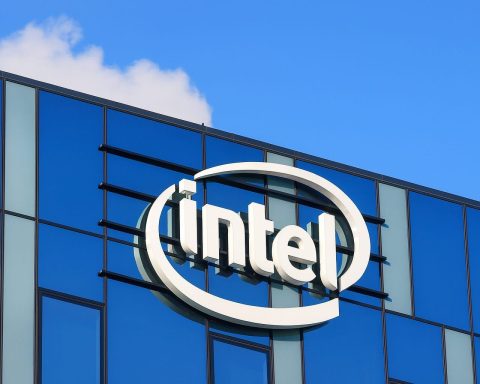- As of early 2025, Russia had about 133 million internet users, a penetration rate of 92.2% of the population.
- Russia’s backbone includes over 100 data centers and 38 Internet Exchange Points, with Moscow and St. Petersburg acting as major hubs.
- There were 216 million active mobile cellular connections in 2025, equal to about 150% of the population, and about 95% of these connections are broadband.
- Fixed broadband is dominated by fiber, with FTTH/FTTB accounting for more than 90% of fixed lines in many regions and over 31 million fiber broadband subscribers by 2022.
- In 2023 Russia had approximately 110 mobile broadband subscriptions per 100 people and 24.6 fixed broadband subscriptions per 100 people.
- As of 2025, 5G rollout is limited to pilot zones in a few major cities, with Moscow hosting some 5G hotspots.
- Russia enacted the Sovereign Internet law in 2019 to enable Runet isolation via deep packet inspection, giving Roskomnadzor control to reroute or block traffic.
- Starlink is not officially allowed to operate in Russia, while Russia plans its own LEO constellation, Sphere/Marathon, with six prototypes launched in 2023–24 and a goal of 393 satellites by 2030.
- Public Wi‑Fi is widespread in cities, with Moscow Free Wi‑Fi covering thousands of locations including the metro and airports often requiring SMS verification for login.
- As of 2025, typical internet pricing remains affordable, with home broadband around 600–700 RUB per month and mobile data commonly 300–800 RUB per month, while tourist eSIMs cost about 10–30 USD.
National Overview and Internet Infrastructure
Russia has a vast internet user base and a well-developed core infrastructure. As of early 2025, about 133 million people in Russia were internet users, representing an internet penetration rate of 92.2% of the population [1] [2]. This penetration has grown steadily from about 85% in 2020 to over 92% by 2023 [3]. In absolute terms, Russia is among the top countries for number of internet users. The country’s backbone infrastructure includes numerous data centers and exchange points – over 100 data centers and 38 Internet Exchange Points (IXPs) operate across Russia, helping route traffic efficiently [4]. Major cities like Moscow and St. Petersburg serve as hubs for internet exchanges, while long-haul fiber optic trunk lines span the country’s vast geography, connecting even far-flung regions.
Russia’s internet is delivered through a mix of fixed and mobile networks. On the fixed side, broadband connectivity (via fiber, DSL, cable, etc.) reaches the majority of households (around 86.6% of households had internet access by end of 2022 [5]). On the mobile side, cellular connectivity is ubiquitous – there were 216 million active mobile cellular connections in Russia in 2025, equivalent to 150% of the population (many people use multiple SIMs or devices) [6]. Importantly, 95% of these mobile connections are “broadband” (3G/4G/5G), meaning most users have access to mobile data rather than just voice/SMS [7]. In 2023, Russia had approximately 110 mobile broadband subscriptions per 100 people (reflecting many users on 3G/4G) and 24.6 fixed broadband subscriptions per 100 people [8]. This indicates that mobile internet is the primary mode of access for many Russians, though fixed broadband still plays a crucial role, especially in homes and businesses.
Backbone and international connectivity: Russia’s geographic expanse means it has multiple international internet gateways. Fiber optic cables connect Russia westward into Europe, south into the Caucasus/Central Asia, and east into Asia-Pacific. There are high-capacity terrestrial links to countries like Finland, Estonia, Ukraine (though connectivity with Ukraine has been affected by political conflict), the Caucasus region, and submarine cable access via the Black Sea. Additionally, Trans-Siberian fiber routes link European Russia with the Far East and ultimately to Asian networks, making Russia a potential transit country between Europe and Asia. Domestically, the “Sovereign Internet” initiative (passed in 2019) led to building more state-controlled routing and exchange infrastructure, theoretically allowing Runet (the Russian internet) to operate in isolation if needed [9]. In practice, Russia remains connected to the global internet, but the government has installed equipment at major exchange points to monitor and control traffic (see Internet Regulation below).
Availability of Fixed Broadband (Fiber, DSL, Cable)
Fiber-Optic Broadband: Fiber is the cornerstone of fixed internet in Russia’s urban areas. Over the past decade, Russia rapidly deployed fiber-to-the-home/building (FTTH/B) in cities, which now accounts for the majority of fixed broadband connections. In fact, analysts estimate FTTH/FTTB make up over 90% of all fixed broadband lines in some regions of Russia [10] [11]. This is largely because most Russians in cities live in apartment blocks, where providers ran fiber to each building (and often to each apartment). As a result, by 2022 Russia had over 31 million fiber broadband subscribers, roughly doubling from 2013 [12]. Fiber broadband is available in all major cities and many smaller towns, offering high speeds (100 Mbps to 1 Gbps plans are common in cities). For example, in Moscow and St. Petersburg, residents can easily get GPON fiber service with speeds from 100 Mbps up to 500 Mbps or more. Fiber deployments also extend to many regional capitals and mid-size cities across the country.
DSL and Cable: Older technologies like DSL (over telephone lines) and cable broadband (over TV coaxial networks) still exist but are shrinking in share. DSL was widespread in the 2000s via the incumbent telephone networks, but operators have been migrating customers from DSL to fiber over time [13]. In rural and remote areas where fiber build-out is not economical yet, ADSL or VDSL may still provide internet over copper phone lines (often with modest speeds of a few Mbps). Cable broadband (DOCSIS) is offered by some cable TV companies (for instance, ER-Telecom’s Dom.ru service and local cable operators in various cities). Cable internet remains in use in certain urban residential areas, though many cable ISPs have also transitioned to fiber or Ethernet in buildings. Overall, as of 2024, fiber is far and away the dominant fixed broadband medium, while DSL and cable account for a small minority of lines [14] [15]. Fixed Wireless Access (FWA) and satellite (discussed later) fill in some gaps for hard-to-reach locations.
Quality of fixed broadband: The quality of fixed broadband in Russia is quite high, especially in cities. Median fixed-line download speeds are around 87–89 Mbps as of 2024 [16] [17], which reflects the extensive fiber connectivity. Many urban users enjoy low latency (~10–20 ms ping domestically) and unlimited data caps at affordable prices. Even in smaller towns, if fiber or cable is available, speeds of 20–50 Mbps are typical, which is sufficient for streaming and remote work. The main quality gap is in rural villages or remote settlements: there, DSL lines might only deliver single-digit Mbps speeds, or residents rely on 4G mobile modems for home internet. In some very remote villages (e.g. in Siberia or the Far East), fixed broadband may be absent entirely, necessitating satellite links or long-distance wireless solutions. The government’s “Bridging the Digital Divide” program (started mid-2010s) has funded bringing at least some form of internet (often via fiber backhaul and Wi-Fi or LTE) to thousands of villages. By 2024, communication services were extended to many rural localities under this initiative [18] [19], though the last few percent of the population still remain offline or on very slow connections.
Mobile Data Networks (3G, 4G, 5G)
Mobile internet is crucial in Russia and broadly available. The country has extensive 3G and 4G LTE coverage across populated areas, and is gradually introducing 5G in select cities.
- 4G (LTE): Russia’s 4G networks are well-developed. All major operators have deployed LTE across cities and towns nationwide since the early-to-mid 2010s. As a result, nearly 75% of mobile subscriptions in 2023 were using 4G LTE [20]. In cities, 4G coverage is essentially universal, and even in rural areas most main roads and settlements have LTE signal (albeit sometimes only outdoors or via external antennas in very remote spots). LTE speeds in practice can range from 10–50 Mbps in rural areas up to 50–150+ Mbps in cities, depending on network load. The median mobile download speed nationally is around 25–26 Mbps [21] [22], which indicates a solid mobile broadband experience for most users. LTE networks operate on multiple bands (800 MHz, 1800 MHz, 2600 MHz, etc.) to balance coverage and capacity. Notably, coverage along the Trans-Siberian Railway and highways is good, ensuring mobile data access even on cross-country journeys (though there may be dead zones in very sparsely populated stretches).
- 3G (UMTS/HSPA): 3G networks (on 2100 MHz and 900 MHz) serve as a backup or complement to LTE. 3G is available virtually everywhere there is cellular service – it was the primary data network in the late 2000s and early 2010s. Today 3G is used in areas where 4G hasn’t reached full strength or on older devices. It provides basic internet (a few Mbps). However, given the high LTE penetration, 3G usage is diminishing. Some operators have even refarmed 3G spectrum to 4G in urban centers. Still, 3G remains important in very remote areas or deep indoors in rural houses where low-frequency 3G signals might penetrate better than LTE.
- 5G: Russia’s 5G rollout has faced delays, but progress is being made in a limited capacity. The government originally aimed for 5G in Moscow by 2020 and wider rollout by 2021, but this timeline slipped [23]. As of 2025, 5G is only available in pilot zones and test deployments in a few major cities. For example, Moscow has some 5G hot-spots – one of the first continuous 5G zones covers Tverskaya Street in central Moscow [24], and operator MTS opened about 14 trial 5G sites around tourist landmarks in Moscow [25]. Pilot 5G networks or trials are also reportedly planned or active in St. Petersburg, Kazan, Novosibirsk, and a handful of other large cities [26]. These are typically limited outdoor zones or specific districts with 5G on mid-band frequencies. Broader commercial 5G service has been slow to roll out due to several factors: regulatory issues over spectrum (the Russian military controls the ideal 3.4–3.8 GHz band, forcing operators to consider a higher 4.4–4.99 GHz band) [27], as well as sanctions and equipment challenges (Western vendors left the market, and domestic 5G hardware is still in development) [28]. In late 2023, the government approved a new telecom strategy through 2035 that calls for Russian-made 5G equipment and eventual coverage of all cities over 100,000 people by 2030–2035 [29]. For now, mainstream consumers in Russia still rely on 4G, with 5G devices falling back to LTE in most areas. We can expect 5G coverage to expand gradually in the coming years as Russian or Chinese equipment fills the gap.
Mobile network quality: Generally, Russian mobile networks offer good quality. In major urban centers, users typically see download speeds of 20–100+ Mbps and reasonable latency (~30 ms) on LTE, which supports streaming, video calls, and other data-heavy applications. Even in smaller towns, LTE often delivers tens of Mbps. That said, rural coverage gaps do exist in very remote regions – e.g., parts of Siberia, the Far North, mountainous areas – where only 2G/3G may be available or signals are weak. On highways between cities, coverage can drop in very isolated stretches. Overall though, 88.7% of the population had access to at least a 3G network by 2022 [30], and that percentage is likely even higher now when considering 2G signal for voice/text. Russia’s mobile internet availability ranks fairly high globally, and the affordability (as we’ll discuss) allows widespread usage.
Major Internet Service Providers (ISPs)
Russia’s telecom market features a mix of large nationwide operators and smaller regional players. The industry is somewhat segmented into fixed-line broadband providers and mobile network operators, though some companies operate in both spheres. Below is an overview of the major ISPs:
Major Fixed Broadband Providers
- Rostelecom: Rostelecom is the largest fixed-line telecom operator in Russia. The partly state-owned incumbent, it inherited the national telephone network and has since deployed extensive fiber broadband. Rostelecom offers DSL, fiber (FTTH/B), and fixed wireless services across all regions – often it is the sole provider in many rural areas. It holds the largest market share in broadband (in 2020, Rostelecom alone had around 41% share) [31]. Through regional subsidiaries, it covers everything from big cities to villages. Rostelecom also operates public Wi-Fi hotspots and has a stake in mobile operator Tele2 for converged services.
- ER-Telecom (Dom.ru): ER-Telecom is a major private broadband provider, known for its Dom.ru brand (and some others). It started with cable TV networks in many cities and upgraded them to provide cable internet and now fiber. ER-Telecom is the #2 fixed broadband company in subscriber numbers. It’s strong in regional cities, often the main competitor to Rostelecom locally. ER-Telecom has about ~10–15% of the broadband market.
- MTS (MGTS): MTS, primarily known as a mobile operator, also has a significant fixed broadband arm. In Moscow, its subsidiary MGTS converted the city’s telephone network to GPON fiber, making MTS a leading ISP in Moscow. MTS has also acquired regional ISPs in other cities, extending its fixed broadband reach. It offers bundled mobile, TV, and home internet packages. MTS’s fixed broadband share has grown to roughly 11% of the market [32].
- VimpelCom (Beeline): VimpelCom, which operates under the Beeline brand, provides fixed broadband in addition to mobile service. Beeline inherited some urban broadband networks (e.g. after acquiring Golden Telecom in the 2000s) and offers broadband in Moscow and other cities, often via FTTB (fiber to building with Ethernet to apartments). Its market share is a bit smaller (on the order of 7–9%) [33]. In recent years VimpelCom’s parent company VEON sold off the Russian business, so Beeline (PJSC VimpelCom) is now a fully Russian-owned entity.
- Others: After the top four (which together account for about 69% of subscribers) [34], there is a long tail of regional ISPs. These include TransTeleCom (TTK) – a railway-owned provider with a backbone network and some retail broadband (especially in Siberia/Far East cities), LANLine/Enforta, Tattelecom (in Tatarstan), Volga Telecom, and many city-specific fiber ISPs. Some municipal governments or utilities also run local networks. In Moscow, apart from MGTS and Beeline, there are smaller players like Akado (cable) and others serving niche segments. Generally, most urban residents have a choice of 2–3 fixed ISPs, whereas rural residents might only have Rostelecom.
Major Mobile Network Operators
Russia’s mobile sector is dominated by four large operators, often called the “Big Four”:
- MTS: Mobile TeleSystems (MTS) is Russia’s largest mobile operator, with about 81+ million subscribers in 2023 [35]. MTS has nationwide coverage and a strong presence in both urban and rural areas. It was a pioneer in LTE and has been involved in 5G testing. MTS also offers fixed broadband (as noted) and digital services. It is known for generally good network quality and has a popular brand with extensive retail stores.
- MegaFon: MegaFon is the second-largest operator, serving around 77 million subscribers (as of 2024) [36]. MegaFon also operates across the entire country (85 regions). It was the first to launch commercial LTE in Russia (back in 4G’s early days) and has a reputation for fast internet in many areas. MegaFon owns the Yota brand as well – Yota began as a data-centric provider and now operates as a virtual operator on MegaFon’s network, often used for unlimited data plans. MegaFon has been actively investing in network upgrades and, as of 2023, even signed deals with domestic manufacturers for thousands of new base stations to bolster 4G/5G coverage [37].
- Beeline (VimpelCom): Beeline is the third major operator, with approximately 44–50 million mobile subscribers(44 million reported in mid-2023) [38]. Beeline has extensive coverage but in recent years has slightly trailed MTS and MegaFon in subscriber count and, reportedly, in 4G coverage quality in some regions. The company has been focusing on network improvements and digital services to catch up. Beeline’s brand is very recognizable (black-and-yellow stripe logo) and it remains a significant player, especially in cities.
- Tele2 Russia: Tele2 is the fourth nationwide operator, originally focused on smaller markets but now present countrywide. Tele2 has roughly 45–48 million subscribers (48.1 million active SIMs at end of 2023) [39]. Rostelecom owns Tele2, and the two have integrated some operations. Tele2 is known for competitive pricing and has been rapidly expanding 4G coverage. It does not have 2G in some areas (it launched later), but it offers 3G/4G and positions itself with simple and affordable plans. Tele2’s market share has grown over the past decade since its expansion from a regional operator to a national one (Rostelecom merged its mobile assets with Tele2 around 2014).
Together, these four operators cover effectively the entire population. They often have roaming agreements to cover remote stretches, so a user will typically have some signal from at least one provider in any settled area. The mobile market is highly competitive, leading to low prices (see Pricing below) and continuous network investment. There are also various MVNOs (mobile virtual network operators) leasing capacity – e.g., some banks and retailers offer branded mobile service, and there are niche MVNOs for IoT, but their market share is small compared to the Big Four.
Regional Connectivity Gaps: Urban vs. Rural
Despite high overall penetration, Russia faces a notable digital divide between urban and rural areas due to its immense geography and uneven development. Roughly 75% of Russians live in urban areas (cities and towns) while 25% are in rural areas [40], and connectivity is markedly better in the cities.
In metropolitan areas such as Moscow, St. Petersburg, Kazan, Yekaterinburg, and other regional capitals, residents enjoy excellent internet options – multiple ISPs, fast fiber connections, dense 4G coverage (even Moscow’s entire subway system has LTE coverage and Wi-Fi), and abundant public Wi-Fi. For instance, Moscow and the surrounding Moscow region have internet usage rates above 95% of the population [41]. Fixed broadband penetration is highest in these hubs; Moscow city has virtually every home wired with fiber or cable. Internet speeds in urban locales are on par with Western Europe – gigabit fiber plans are available, and mobile networks have high capacity. Additionally, cities benefit from better redundancy (e.g., several backbone links and data centers in Moscow ensure reliable service).
By contrast, rural and remote regions have lower connectivity rates and quality. As of 2023, about 83% of rural households had internet access (vs ~88% nationally) [42]. The gap has narrowed in recent years (thanks to 3G/4G expansion and government programs), but some challenges remain:
- Lower broadband availability: Many small villages (especially those with only a few hundred residents) might lack fiber or cable options. Rostelecom has extended DSL or fiber to a lot of district centers, but the “last mile” to very isolated hamlets can be missing. In such places, residents might rely solely on mobile networks if coverage exists, or on older dial-up/satellite for basic access. A study noted that a few years ago only ~65.8% of rural residents had access to high-speed internet vs 81% of urban residents, illustrating the gap [43].
- Regional disparities: Some regions historically lag in telecom infrastructure. For example, fixed broadband penetration is highest in Moscow and lowest in the Chechen Republic [44]. Northern Caucasus republics, Siberian republics like Tuva or remote oblasts like Chukotka and Kamchatka have fewer high-speed options compared to wealthier western regions. The Far East also faces high costs and sparse population, making connectivity harder. However, notably, even in such regions, 4G mobile coverage often reaches main settlements.
- Underserved communities: Indigenous villages in the Arctic, remote islands, or mountainous areas may only have satellite or very basic radio links. The government’s Universal Service Fund has installed satellite-powered Wi-Fi access points in some villages (often offering 512 kbps to 2 Mbps communal internet). These are lifelines but far from urban broadband quality.
To tackle these divides, infrastructure projects are ongoing. The Elimination of Digital Inequality (EDI) program (also called Bridging the Digital Divide) funded fiber backbones to thousands of villages and installation of LTE base stations or Wi-Fi hotspots there [45] [46]. By 2024, this project connected many rural settlements of 250–500 people with at least 10 Mbps links. Additionally, operators have been using Fixed-Mobile Convergence: offering home router solutions that use 4G/5G networks to deliver broadband to rural homes. For example, in some dacha (countryside) areas outside cities, people install 4G routers with external antennas to get decent internet without cables. This has significantly improved rural internet speeds in areas with cell coverage.
In summary, urban Russians enjoy near-universal high-speed internet, whereas rural Russians often have internet but at lower speeds or via wireless means. The gap is closing gradually: an estimated 83% of rural households online vs 90%+ urban [47] is a better ratio than a decade ago. Still, geography ensures that remote areas will always be more challenging. The ongoing rollout of 4G/5G and future satellite broadband (see next section) aims to ensure even the most isolated parts of Russia can get online in the coming years.
Satellite Internet Availability
Satellite internet plays a niche but important role in Russia, given the vast territories with low population density (e.g. Siberia, Arctic). There are two aspects to consider: traditional geostationary satellite services and new low-Earth orbit (LEO) satellite broadband systems.
Geostationary satellite services: Russia has long used geostationary satellites to serve remote areas. Gazprom Space Systems (a satellite operator) provides broadband via its Yamal series of satellites. For instance, the Yamal-601 satellite (launched 2019) offers Ka-band beams covering Russian territory for internet access [48]. Companies or government offices in remote oil fields, far-north villages, or Siberian outposts often use VSAT terminals pointed at satellites like Yamal or Express-AM series to get a connection. These links typically provide a few Mbps down, and satellite latency (~600–700 ms) is high due to the 36,000 km orbit distance. The cost is also relatively high per MB, so geostationary satellite internet has not been widespread among average consumers – it’s mostly used by enterprises, the military, or as a last resort in places with no other connectivity. Nonetheless, it is available anywhere in Russia with a view of the southern sky, and there are service providers that can install a satellite dish for internet if one is willing to pay the price. Regulatory-wise, Russian satellite services are legal and licensed; users must register their terminal with authorities.
LEO satellite internet and Starlink: Low-earth-orbit constellations like SpaceX’s Starlink promise much faster and lower-latency internet from space. However, Starlink is not officially allowed to operate in Russia. In fact, the Russian government moved to ban Starlink usage – a law was proposed to fine individuals 10,000–30,000 RUB for using Starlink (≈ $135–$400), and up to 1 million RUB for companies that try to use it [49]. This was an effort to prevent uncensored, foreign-provided internet in Russia. As a result, Starlink’s coverage map does not include Russia (except possibly very fringe areas like Kaliningrad, and Starlink signals spilling over borders). Using Starlink inside Russia without permission is illegal and users have indeed been warned or fined. The authorities tightly control satellite ground station rights – to legally use a satellite service, it must go through Russian-licensed gateways.
Future Russian LEO plans: Instead of relying on Starlink, Russia has announced its own LEO satellite constellation plans. In 2024, the Minister of Digital Development (Maksut Shadayev) revealed an initiative to deploy a Russian satellite internet network similar to Starlink [50]. A private company called Bureau 1440 LLC is spearheading this project, which aims to launch hundreds of low-orbit satellites to provide broadband across Russia’s huge landmass [51]. The plan is ambitious: by 2027, form the backbone of a constellation to offer fast, affordable internet even on moving objects like trains and planes [52]. Test launches have already begun – six prototype satellites were launched in 2023–24, and starting in 2025 they intend to regularly deploy batches of satellites [53]. The target is to have 393 satellites in orbit by 2030 and ultimately over 900 by 2035 for global coverage [54] [55]. The Russian government is investing heavily (up to 280 billion rubles of federal funding by 2030) in this “Sphere” or “Marathon” program (various names have been used) as part of its national digital strategy [56]. If successful, this system would dramatically improve connectivity in Russia’s remote Arctic villages, Siberian taiga, and Far Eastern territories where building fiber or cell towers is impractical. Speeds could be comparable to Starlink (100+ Mbps) with low latency (~20–40 ms), bringing modern broadband to places currently on 2G or no service.
In the interim, some foreign satellite services do still reach Russia: for example, OneWeb (a UK-based LEO constellation) had partnerships to serve the Arctic and was partially launched with Russian rockets before geopolitical issues arose – its status in Russia is now uncertain. Also, satellite broadband from European providers like Eutelsat’s Konnect covers parts of Russia (European Russia is within the footprint of some Eutelsat satellites) [57]. But any foreign provider must coordinate with Russian regulators. After 2022, most Western companies ceased service in Russia or were blocked from expanding, so the landscape currently leans toward domestic capabilities.
Regulatory conditions for satellite: In Russia, operating satellite terminals requires permission. ISPs offering satellite access must be licensed, and users often need to register their terminal’s ID. The government, through laws and enforcement by Roskomnadzor, actively discourages unauthorized satellite use (as seen with Starlink). Customs has also been known to scrutinize or confiscate Starlink kits. Until the Russian LEO system comes online, the practical satellite options for civilians are limited to Russian providers (e.g., using Yamal satellites via authorized resellers). Tourists or foreign NGOs cannot simply bring a satellite hotspot – that could lead to legal trouble. In summary, satellite internet is available but tightly controlled. It currently serves as a specialty solution for remote connectivity, and Russia is betting on its own “Starlink-like” constellation by the late 2020s to leapfrog current limitations [58].
Internet Access for Tourists
For travelers and short-term visitors to Russia, getting online is usually feasible, but recent changes have made it more complicated to obtain local SIM cards. Here are the main options and considerations for tourist connectivity:
- Local SIM Cards (Tourist SIMs): In the past, foreign tourists could fairly easily buy a prepaid SIM card from a Russian operator (MTS, MegaFon, Beeline, Tele2) at airports or official stores by showing a passport. Prices for local SIM plans are very cheap (e.g. a few hundred rubles for several GB of data). However, as of January 1, 2025, the rules for foreigners buying SIMs have become much stricter. New legislation requires that foreign citizens can only purchase a SIM in person at a carrier’s office and must undergo biometric identification [59]. The buyer needs to provide a passport with a notarized Russian translation, a Russian SNILS number (social tax ID), and have their identity verified in the Unified Biometric System [60] [61]. Essentially, a foreigner now must have a valid Russian digital profile (including fingerprint/face biometric data on record) to get a SIM. Moreover, any SIMs obtained earlier by foreigners had to be re-registered under the new rules by July 1, 2025 or they would be deactivated [62]. There’s also a limit of 10 SIMs per person. These requirements are onerous for short-term tourists – most travelers will not have a SNILS or biometric account in Russia. In practical terms, it has become extremely difficult for a tourist visiting for only a week or two to buy a local Russian SIM card in 2025. Travelers on forums report that it’s “practically impossible for a tourist to get a SIM card now unless you’re staying at least 3 weeks” (presumably to complete paperwork) [63]. Some carriers might still issue SIMs to foreigners at flagship stores, but you should be prepared for possible denial or a very involved process. If you do succeed (e.g. a foreign student or long-term visitor might go through registration), you’ll get a regular prepaid SIM with domestic rates (which are cheap) – just note your usage will be monitored as per the law.
- International eSIMs and Roaming: Given the SIM hurdles, many tourists opt for eSIM plans or roaming services instead. Numerous travel eSIM providers (e.g. Holafly, Airalo, aloSIM, the local site russiaesim.com, etc.) offer data packages for Russia. You purchase these online and receive a QR code to activate an eSIM on your phone, without needing a Russian phone number or going to a store. These eSIMs are typically data-only (no local Russian number for voice calls, and no SMS reception in most cases), but they allow internet access through partnerships with Russian networks. For instance, an eSIM might connect to Beeline or Tele2’s network. Prices are higher than local SIM rates but still reasonable: for example, 10 GB for 15 days might cost around $12 according to user reports [64], or other packages could be $20–$30 for a few GB. Some providers even offer unlimited plans (with daily high-speed caps) – one unlimited eSIM plan provides 1 GB of high-speed data per day (then throttled) at about 5 Mbps beyond that [65] [66]. ESIM speeds are 4G LTE and generally good in both urban and rural areas, as they piggyback on the major networks [67]. This has become a convenient solution for tourists: you can set it up before arriving, and you won’t need to worry about Russian bureaucracy. The drawback is no local number (so ride-hailing or some verification SMS might need to go to your home number), but apps like WhatsApp will still work with your original number. Alternatively, international roaming with your home carrier is an option, but note that many Western carriers have stopped roaming agreements with Russia due to sanctions, and those that do allow it often charge very high fees. Check with your carrier – in many cases, a travel eSIM will be much cheaper than roaming.
- “Tourist SIM” products: In light of the new rules, some Russian operators or travel agencies might introduce special tourist SIM solutions (perhaps sold via hotels or with simplified registration). However, due to the law’s strictness, this is not common yet. One workaround some travelers used was buying a SIM via a Russian friend (a local can buy and then hand it to you). Note that officially the person who registers the SIM is responsible for its use. Proceed with caution, as registering a SIM under someone else’s name for your use is a gray area.
- Pocket Wi-Fi Rentals: Portable Wi-Fi hotspots (battery-powered routers) pre-loaded with a data SIM can be rented in some instances. Travel companies like Holafly and others have offered Pocket Wi-Fi for Russia, where you pay a flat rate for unlimited (or high cap) data and get a device to carry. For example, one such rental plan costs about $89 for one week of use and includes 1 GB of data per day on a mobile hotspot device [68]. The advantage is that you can connect multiple devices (phone, laptop, etc.) to your private Wi-Fi. The downside is the cost (roughly $10+ per day, which is high for Russia’s standards) and the need to pick up/return the unit (some services might ship it to you or have airport pickup). Given the new SIM rules, pocket Wi-Fi rentals might gain popularity for foreign business travelers needing reliable connectivity without hassles. Another approach is if you own an unlocked pocket Wi-Fi device, you could buy a local SIM (if possible) or use an eSIM in a spare phone and tether it [69]. But with the SIM restrictions, many will lean on eSIMs or rentals.
- Prepaid SIM from neighboring countries: This is a niche tip – some travelers entering Russia from nearby countries (e.g. Kazakhstan, Turkey) have used a foreign SIM that has roaming in Russia included. For instance, a Kazakhstan Beeline SIM may roam in Russia at a lower cost than EU/US operators. This is only relevant if you’re coming through those countries and have such access.
In summary, tourists in 2025 should plan ahead for internet access. The simplest route is to purchase a Russia-compatible eSIM data plan online before your trip [70], which will let you connect as soon as you land. If you require voice calls and a local number, be aware it’s tricky – you might rely on internet calling (VoIP) or messaging apps instead. Public Wi-Fi can supplement your connectivity (see next section). And if you need 24/7 connectivity for multiple devices, a pocket Wi-Fi rental, though costly, is an option to consider [71]. The days of picking up a cheap Megafon SIM at the airport kiosk in 5 minutes are unfortunately gone for now due to the new regulations.
Public Wi-Fi Availability
Public Wi-Fi is widely available in Russia’s cities and travel hubs, which is a benefit for both residents and visitors. In major cities, you can find free Wi-Fi networks in many public places:
- Airports and Train Stations: All big airports (Moscow’s Sheremetyevo, Domodedovo, Vnukovo; St. Petersburg Pulkovo; etc.) offer free Wi-Fi. However, access often requires you to receive an SMS code for verification due to Russian law (which mandates user identification for public internet). Typically, you connect to the airport Wi-Fi, enter your mobile number on a captive portal, and a code is sent via text to login. This means if you don’t have a working Russian SIM, you might not receive the SMS. Some airports allow foreign numbers, but others might not. Travelers report that at Sheremetyevo, those without a Russian number had to use Wi-Fi in lounges or cafes that provide separate Wi-Fi, as the general free Wi-Fi needed a Russian SMS verification [72]. So, free airport Wi-Fi is there – just be ready with a phone that can get texts or use an alternative login if provided (e.g., some networks allow passport scan at an info desk as verification).
- City Hotspots: Cities like Moscow have extensive outdoor and indoor Wi-Fi networks. In Moscow, the city government operates “Moscow Free Wi-Fi” which covers thousands of locations – on the streets of the city center, in public parks, on public transport (buses, trams), and in the entire Metro system. Indeed, Moscow’s subway Wi-Fi (SSID often “MT_FREE”) is one of the largest public Wi-Fi networks, allowing millions of riders to stay online during commutes. St. Petersburg has a similar system in its metro and public areas. Logging in usually requires a one-time phone number registration as well (again, SMS code). Once connected, these networks are free and reasonably fast (not for heavy downloads, but good for emails, messaging, browsing). According to one source, most popular places in Russia have Wi-Fi – you’ll find free Wi-Fi in “most cafes, restaurants, hotels, museums, and other tourist centers,” plus public hotspot networks in cities [73]. This means that if you’re traveling without mobile data, you can often hop between Wi-Fi networks at your hotel, then a café, then a museum, etc., to remain connected.
- Cafes and Restaurants: It’s almost a given that any café, coffee shop (e.g. Shokoladnitsa, Coffee House chains), and mid-range or higher restaurant in urban Russia offers free Wi-Fi to patrons [74]. Usually, you ask for the password or it might be on the receipt. Some places use an SMS-login captive portal instead of a simple password, but many just have a password. Western fast-food chains (McDonald’s, etc.) and malls also provide free Wi-Fi. For example, shopping centers have free networks (with login via SMS or a code from an information desk). Tip: If you don’t have a Russian SIM to receive SMS, politely asking a waiter or a fellow customer for the Wi-Fi password (if it’s not public) is acceptable – often they’ll just tell you a simple code or even help you authenticate using their number.
- Hotels: All hotels that cater to tourists or business travelers will have Wi-Fi, typically free for guests. Quality can vary from excellent fiber-backed networks in upscale hotels to patchy DSL-based Wi-Fi in small guesthouses. But generally, you can count on hotel Wi-Fi for basic needs. Again, due to the law, some hotels might hand you a login code at check-in linked to your passport registration rather than open Wi-Fi – but the common scenario is just a password.
One thing to note: the identification law for public Wi-Fi (from 2014) technically requires providers to verify user identity. That’s why we see phone number SMS logins in Russia so frequently. If you do have a working phone number (Russian or even foreign that can receive texts), you can utilize virtually all public Wi-Fi by entering that number for the SMS code. If you do not, you might be limited to places that give out passwords instead (smaller cafes, private networks) or you rely on your mobile data.
In transportation, aside from city transit, many long-distance trains now offer Wi-Fi in certain classes (for example, the Sapsan high-speed train between Moscow and St. Petersburg has Wi-Fi in business class, though it may require signup). Long-haul coaches/buses sometimes advertise Wi-Fi, but it’s hit or miss.
The bottom line: Public Wi-Fi is a good backup. A traveler without a SIM can still find internet every so often – “there are a lot of free Wi-Fi places” available, as travelers note [75]. Just use common safeguards: public Wi-Fi is not encrypted, so avoid sensitive transactions unless you’re on a VPN. And remember that 4G/LTE is so prevalent and cheap for locals that many Russians themselves don’t bother with Wi-Fi in cafes (they often stick to mobile data which is more secure) [76]. But for a visitor, these Wi-Fi networks are a valuable resource – nearly every cafe or museum visit can double as an internet check-in point.
Internet Speeds, Latency, and Reliability
Russia’s internet speeds are quite decent on average, thanks to the widespread fiber and 4G infrastructure:
- Fixed broadband speeds: The median fixed broadband download speed in Russia is around 87–89 Mbps as of early 2024 [77] [78]. Upload speeds are lower but with fiber are often 50+ Mbps. Many urban customers enjoy much higher than the median (e.g. 300 Mbps or Gigabit plans in major cities), while rural fixed-line users may have lower (10–20 Mbps on DSL or wireless). These figures place Russia above the global average in fixed speeds, and roughly in the middle of European countries. Latency on wired connections is generally low, often ~10-30 milliseconds within Russia, which is good for streaming and online gaming. The country’s vast geography means that ping times to international servers can be higher (e.g. connecting from Vladivostok to a European server might introduce 100+ ms of latency simply due to distance). However, domestic Russian CDNs and caching are strong – about 71% of popular website content is available on local servers or caches in Russia [79], which improves effective speeds and latency for users.
- Mobile broadband speeds: The median mobile download speed is about 25–26 Mbps [80] [81], with uploads around 10 Mbps. In practice, speeds vary widely – in uncongested areas or with good 4G+ coverage, one might see 50–100 Mbps on a phone; in crowded cells or fringe areas, it could be 5–10 Mbps. LTE Advanced is deployed in cities (carrier aggregation, etc.), so top speeds can exceed 150 Mbps under ideal conditions. Latency on 4G is typically around 30-50 ms to the first hop, which is fairly good for most apps. On 3G networks, speeds drop (a few Mbps) and latency rises (~70+ ms). With eventual 5G rollout, speeds will increase dramatically (potential for 1 Gbps+ in mmWave tests), but as noted, 5G is not yet a factor for most users. Overall, Russian mobile internet is more than sufficient for HD video streaming, video calls, and online gaming in most populated areas.
- Reliability: Generally, internet services in Russia are reliable on a day-to-day basis. It’s uncommon to have nationwide outages. The networks have redundancy – for instance, multiple fiber routes connect regions, so a single fiber cut seldom knocks out an entire area (though it can slow things until rerouted). Urban centers have many ISPs and routes, making them robust. That said, localized outages do occur. For example, in March 2024, the Trans-Baikal Territory in Siberia experienced an internet blackout due to maintenance works disrupting lines, even affecting emergency phone services briefly [82]. Power outages or accidents can also temporarily cut off some local networks. In some far-flung areas with a single backhaul link, a fiber cut or satellite issue can disconnect that area until fixed.
Another form of “outage” is intentional throttling or shutdowns for security reasons. While not common, there have been instances: during certain protests or sensitive events, authorities have throttled mobile internet or made specific services unreachable in a locale [83]. For instance, reports noted that during demonstrations in Yakutsk (Far East) and in Bashkortostan in early 2024, WhatsApp and Telegram became inaccessible and general internet was unstable in the immediate area [84]. These were likely targeted slowdowns by using Russia’s “sovereign internet” capabilities. Additionally, during school exam periods, some regions temporarily disable mobile internet to prevent cheating (this has happened in Chechnya and elsewhere). Travelers generally wouldn’t encounter such shutdowns unless coincidentally in the area during those events, but it’s a facet of reliability tied to policy.
On the whole, a resident or traveler in Russia can expect fast and mostly reliable internet in the main cities, comparable to Western countries, and somewhat lower speeds with occasional instability in very remote locales. The continuous modernization (e.g. fiber rollout, future 5G, satellite backup links) is improving reliability each year.
Pricing of Internet Services
One notable aspect of internet in Russia is affordability – both home broadband and mobile data tend to be much cheaper than in many other countries, even after some price increases.
Home broadband pricing: Fixed broadband in Russia is a bargain by global standards. In large cities, multiple providers compete, driving prices down. A typical fiber home internet plan (unlimited data) costs on the order of a few hundred rubles per month:
- For example, 100 Mbps unlimited might be around 500–600 RUB/month (roughly $6–$8). Even higher speeds like 300 Mbps or 500 Mbps often cost under 1000 RUB (~$10–$13) per month, especially if bundled with TV or mobile service. In Moscow, some promotional rates have been as low as 400 RUB for 200 Mbps when signing annual contracts.
- In smaller towns with only Rostelecom, prices might be slightly higher but still relatively low (maybe 600–800 RUB for 50 Mbps DSL or fiber). Rural areas using satellite or radio links pay more (some might pay per gigabyte or around 1000 RUB for modest speeds due to higher cost of infrastructure).
Recent increases: It’s worth noting that in late 2024 and early 2025, many ISPs implemented price hikes of about 5–15% on home internet tariffs [85]. This was due to inflation and the rising cost of imported equipment (sanctions forced operators to buy hardware via costlier channels, and the ruble had weakened) [86]. Even with these hikes, the absolute prices are still low. For instance, an ISP that charged 500 RUB may have raised it to 550–575 RUB. Both federal providers (like Rostelecom, MTS) and regional ones announced such increases [87]. So customers saw a small uptick, but ISPs often grandfathered old plans or offered alternatives to mitigate bill shock [88]. As of early 2025, the average monthly fee for a standard broadband plan might be around 600–700 RUB (≈ $8–$9). To put it in perspective, these prices are a fraction of what US or European users pay for similar speeds.
Mobile data pricing: Russia has historically had extremely cheap mobile data. According to a 2019 analysis, Russia had the world’s 4th-cheapest mobile data costs [89]. At that time, 1 GB of data cost only about 38 RUB ($0.60) on average [90], and an unlimited monthly plan averaged ~613 RUB (about $9.70) [91], compared to a global average of $44 for unlimited. Since then, prices have risen slightly, but not dramatically. By end of 2022, one source put the average mobile package (calls+texts+data) at ~543 RUB per month [92] – still under $10. In 2023, another report noted a year-on-year increase of ~66 RUB in the average subscription fee, reflecting some inflation [93].
Concretely, in 2025 one can find deals like: 300–400 RUB for 15–20 GB data + some calls/SMS, or 600–800 RUB for unlimited data on-device. Different operators have slightly different structures (Beeline might offer true unlimited for ~700 RUB; MTS might cap at 30 GB then throttle unless you pay more, etc.). But generally, for under $10 you can get more data than most people can use in a month. This low pricing is the result of strong competition and regulatory pressure to keep telecom affordable.
Tourist connectivity costs: While locals pay low rates, tourists using international solutions will pay more. For example, an international eSIM 5 GB pack might cost $15–$20, which is expensive per GB compared to local rates but still reasonable for short-term use. Pocket Wi-Fi rentals, as noted, can be $10+ per day (so easily $70+ per week). If one were somehow able to buy a local SIM, you could spend as little as 500 RUB ($6) and get enough data for a two-week trip. But since that’s difficult now, tourists effectively pay a premium through travel-oriented services.
To illustrate current local costs: As of early 2024, unlimited mobile data plans in Russia were around 650–800 RUBon the major networks, and limited plans (say 10 GB + calls) could be 300–400 RUB. Home broadband at 100 Mbps was ~550–600 RUB/month in many cities [94]. Even after price hikes, Russia’s telecom services remain among the cheapest in the world for the amount of service provided. Of course, the flip side is Russia’s average incomes are lower than Western Europe, so affordability is relative; but telecom has been kept very accessible.
It’s also notable that many Russians use bundled plans – e.g., a family package where for ~1000 RUB they get home internet + two mobile lines + TV. Operators incentivize combining services, which further drives down the per-service price.
In summary, typical internet pricing in Russia (2025):
- Home broadband: Roughly 500–800 RUB/month for common plans (which is about $6–$10). Higher-end gigabit plans might be ~1000+ RUB ($13), while basic plans in small towns might be ~400 RUB for lower speeds.
- Mobile data: Often 300–600 RUB/month ($4–$8) for generous data packages that would be considered mid-to-large plans (10–30 GB or unlimited with some caveats). Truly unlimited premium plans top out around 800–900 RUB ($11–$12).
- Tourist SIM/eSIM: Typically $10–$30 for short-term packages (depending on data amount), which is higher per month but usually sufficient for a trip. Pocket Wi-Fi around $10/day if chosen.
These prices make Russia a great place for heavy internet users – you can stream and surf without worrying much about cost. The low cost has also contributed to the high internet penetration and time spent online in Russia.
Government Initiatives and Internet Regulation
The Russian government plays a significant role in the internet sphere, both in promoting infrastructure and imposing regulations/censorship. Here are key points regarding initiatives and policies:
- National Programs for Expansion: The government has launched initiatives like the aforementioned Digital Economy national program (2018–2024) and its successor currently discussed (sometimes referred to as “Digital Transformation” or “Data Economy” program) [95]. These programs channel federal funds into improving connectivity, e-government services, and digital skills. For example, the Internet Access Infrastructureproject under these programs provided subsidies to build fiber lines to unserved villages and install cellular base stations where the market wouldn’t otherwise go [96] [97]. Another ongoing effort is to support domestic telecom equipment production (so Russia can produce its own routers, base stations, etc., reducing reliance on foreign tech). The new telecom strategy through 2035 approved in 2023 specifically calls for developing Russian-made 5G/6G equipment and achieving wide 5G coverage by the 2030s [98]. There’s also investment in submarine cables (for example, building new routes to Asia) and in data center capacity in Russia’s regions. These initiatives demonstrate the state’s push to not only increase access but also gain technological sovereignty in the internet domain.
- Sovereign Internet (Runet) Law: In November 2019, Russia enacted the “sovereign internet” law, which aims to enable the domestic internet (Runet) to continue operating even if cut off from the global web. To do this, the government installed deep packet inspection (DPI) equipment at ISP networks and built control points. This infrastructure allows authorities to reroute or filter traffic through central hubs. In effect, Roskomnadzor (the telecom regulator) can isolate Russian internet traffic and block external connections if needed (though such a drastic cut-off hasn’t been fully tested). The law also required ISPs to test RuNet’s autonomy – for instance, there have been drills where traffic is briefly re-routed internally. For everyday users, this has two major impacts: improved control and censorship capabilities (since the DPI can selectively throttle or block content), and a slight risk to reliability if overused. As mentioned, experts estimated implementing the sovereign internet system could cost the industry 134 billion RUB a year in equipment and maintenance [99]. But Russia proceeded, seeing it as a strategic priority.
- Internet Censorship and Blocks: Russia maintains a large blacklist of websites that ISPs must block. This includes sites with content on drugs, suicide, extremism, as well as opposition political sites and many foreign news sources. Censorship drastically ramped up after the Ukraine invasion in Feb 2022. Since then, Roskomnadzor fully blocked Facebook, Instagram, Twitter in 2022 [100], as these platforms were used to spread anti-war information. Meta (Facebook/Instagram’s parent) was declared an “extremist organization” by a Russian court [101], making its operations illegal. Many Western news sites (BBC, Deutsche Welle, etc.) and Russian independent media were also blocked. As of 2023–24, Russians cannot directly access major social networks like Facebook, Instagram, and LinkedIn; YouTube is actually still available (as of 2025) but under pressure; TikTok is partially restricted (they disallowed new uploads from Russia). Wikipedia has faced demands to remove content and threats of blocking but remains accessible so far. The encrypted app Telegram was briefly banned in 2018 but that was lifted in 2020; ironically it is now widely used even by officials. However, new laws target any content deemed as “LGBT propaganda” or “fake news about the military” with strict penalties [102] [103]. This has led to increased content removals and self-censorship on platforms.
- VPNs and circumvention: To get around blocks, many Russian users (and travelers) use VPN services or Tor. The government knows this and has taken steps to limit circumvention. In March 2024, a law came into effect banning websites from even posting information on how to use VPNs, and authorities promptly blocked around 30 sites that provided instructions to access banned sites [104]. Earlier, they had already banned many popular VPN services’ websites. During 2023, Roskomnadzor kept pressuring VPN providers – if a VPN refused to cooperate with Russian censors (most do refuse), its website or server endpoints might be blocked. For example, the sites of ProtonVPN, NordVPN, etc., have been blocked. Some VPNs still work in Russia, especially if they use obscure servers or advanced techniques, but the government’s DPI can sometimes detect and throttle common VPN protocols. As of mid-2024, at least eight additional VPN services were officially blockedand even discussing ways to bypass blocks can be deemed illegal [105]. Despite this, a substantial number of Russians continue to use VPNs daily to reach Facebook, Instagram, and foreign news – it’s a cat-and-mouse game with the censors.
- Surveillance and data laws: Russia has extensive data retention and surveillance laws. The Yarovaya law (2016)requires telecom providers to store users’ communications (texts, calls, and metadata for internet traffic) for months and provide it to security services on request. ISPs must also install SORM equipment (System for Operative Investigative Activities) that allows law enforcement to monitor or intercept internet traffic. In 2023, new measures expanded government access to data: for instance, taxi apps must feed live location data of rides to a state system [106], and ISPs were ordered to provide users’ geolocation data from cell towers to authorities [107]. These moves increase the surveillance of citizens’ online and offline activities. For a resident, this means privacy is limited – authorities can potentially read unencrypted communications and track internet usage, and criticize the government online at one’s own risk. Indeed, hundreds of criminal cases have been opened against people for social media posts “discrediting” the army or government, leading to multi-year prison sentences in some cases [108].
- Notable infrastructure projects: In addition to the rural broadband projects, Russia has pursued things like building a new trans-Arctic submarine fiber cable (the Polar Express project) to connect Murmansk to Vladivostok via the Arctic Ocean, improving connectivity in the Far North. The government is also investing in Internet-of-Things satellite networks (like launching “Marathon” IoT satellites) [109] for asset tracking. Another project is expanding public Wi-Fi and 5G in Moscow with city partnerships. These illustrate that even while clamping down on content, the state continues to support the expansion of internet infrastructure for economic and strategic reasons.
In summary, the Russian government’s approach to the internet is dual: build and control. They want to boost coverage and local technological capabilities (viewing internet access as crucial for economic development and governance), but they also heavily regulate and monitor the content and usage of that internet for political and security purposes. This means that for users, you can get good internet access even in remote areas thanks to state programs, yet you’ll encounter a curated version of the internet unless you use circumvention tools. Censorship and surveillance have increased in recent years, impacting freedom online (Russia’s Freedom on the Net score has declined, reflecting a “Not Free” internet environment). Still, the average person can read and watch a lot online – there’s a rich Russian-language internet ecosystem (social networks like VKontakte, local messaging like Telegram, search engines like Yandex) that replaces many blocked Western services. Travelers should be aware of this landscape: some of your favorite sites/apps might not work without a VPN, and discussing certain topics online while in Russia could attract scrutiny.
Tips for Getting Reliable and Fast Internet in Russia
Finally, here are practical tips for residents and especially travelers to ensure you have the best internet experience in Russia:
- Choose the Right Provider/Plan (Residents): If you live in Russia, opt for fiber broadband at home if available. All major cities have multiple fiber ISPs – check which providers serve your building. Rostelecom is the default in many places, but if you have alternatives like ER-Telecom, MTS, Beeline, etc., compare their prices and speeds. Often, the smaller regional ISP can offer a very competitive deal. In apartment buildings (MDUs), it’s common to have Ethernet ports or fiber from 2-3 providers already installed – ask your landlord or neighbors which ISP has good service. Speeds of 100 Mbps are usually more than enough for most needs; higher tiers (300 Mbps, 500 Mbps) might be only marginally more expensive, so consider them if you do heavy downloading or 4K streaming on multiple devices.
- Leverage Bundles: Russian telecom companies love bundles. If you need mobile service and home internet, see if a single company offers both in your area – for example, MTS or Beeline might give a discount if you combine mobile lines with home broadband. Rostelecom and Tele2 have joint offers as well. Bundling can save money and unify your bill, and sometimes they throw in perks like TV packages.
- In Rural Areas – consider LTE modems: If you’re in a location without good wired internet, a common solution is to use a 4G/LTE router for home broadband. All mobile operators sell such devices (sometimes called “home 4G router” or fixed wireless). For a flat monthly fee (often similar to a phone plan), you get a certain data allowance or even unlimited traffic to use via that router, which creates Wi-Fi for your household. Ensure you have a decent 4G signal; you might need to install an external antenna on your roof for better reception. This can turn a weak mobile signal into a stable internet source. It’s an approach used in dacha communities and villages. Additionally, check if any local initiative (under the Bridging Digital Divide program) has installed a public Wi-Fi hotspot in your village – if so, you might use a range extender to bring that signal into your home.
- For Travelers – Prepare an eSIM: As discussed, buying a local SIM is no longer trivial for short visits [110]. The best strategy is to get a prepaid eSIM for Russia from a provider before your trip. Research providers like Airalo, Holafly, MTX, etc., or the Russia-specific ones. Make sure your phone is eSIM-capable and unlocked. Purchase the eSIM online, install it, and have it ready to activate when you land. This way, you’ll have immediate data access (like to request a ride or check maps at the airport) without hunting for SIM cards. If you absolutely need a Russian phone number (for voice/SMS), one workaround is to use services like Skype-In or get a virtual number that forwards to VoIP – not ideal, but an option if a local number is needed for say bank SMS (though most tourist activities won’t require a Russian number).
- Use Public Wi-Fi Wisely: Take advantage of the abundant free Wi-Fi in cities [111]. Save your mobile data by using Wi-Fi at the hotel and restaurants. Download offline maps and information while on Wi-Fi to use when out and about. However, remember public Wi-Fi often requires phone SMS login – since you might not have a Russian SIM, try using a foreign number (sometimes it works with the country code, sometimes not). If not, you can ask a friendly local to receive an SMS for you to get on (the risk is minimal for them if it’s just a Wi-Fi code). Once you’re logged on in one location, some networks (like the Moscow city Wi-Fi) keep your device authenticated across the city for that day. Always use a VPN on public Wi-Fi if you are concerned about security; at minimum, avoid entering passwords or sensitive data on unknown networks.
- VPN for Open Internet: If you want to access blocked content (social media like Facebook/Instagram, many news sites, etc.), set up a VPN before you go. Download a few reputable VPN apps (since some might be blocked, it’s good to have backups). Currently, VPN usage by individuals is not illegal in Russia, but advertising or providing VPN services is restricted [112]. Many Russians use VPNs daily to get to restricted sites. Just be aware that VPN connections might occasionally be slower or get disrupted if Roskomnadzor targets the servers. A tip is to have multiple VPN protocols (OpenVPN, WireGuard, Shadowsocks, etc.) and try different server locations if one isn’t working. Also, Tor Browser can bypass some censorship (though the Tor Project site is blocked [113], you’d need it pre-installed). Using a VPN will also encrypt your traffic, adding privacy on any network.
- Device Compatibility: If you’re bringing phones/laptops, no special compatibility issues – Russia uses standard Wi-Fi frequencies and LTE bands (LTE bands 3, 7, 20, 38, etc. are common – most international unlocked phones will work fine on Russian 4G networks). 5G phones will mostly use 4G networks in Russia for now, since 5G is limited.
- Local Help: If you have contacts in Russia (friends, hotel concierge, etc.), don’t hesitate to ask for help obtaining connectivity. Sometimes hotels can provide a SIM card rental or an extra phone. Some tourist services might sell pre-registered SIMs (legality is questionable, but it happens). Use reputable sources though – avoid buying SIMs from random touts, as registration laws are strict and SIMs linked to someone else could be suddenly deactivated if not re-registered properly.
- Pocket Wi-Fi Rent if Needed: If you require multiple devices online (say you’re traveling as a group or need to connect your laptop frequently on the go), consider renting a portable Wi-Fi hotspot. You can book these online for pickup in Russia (or in some cases have them shipped). They use the local networks and create a Wi-Fi network for you. Ensure you follow the return instructions to avoid extra charges. The cost is high, so this is only worth it if a single phone’s eSIM won’t suffice for your use-case.
- Keep it Legal: While using VPNs and such is common, be mindful of Russian laws. Do not publicly offer SIMs or VPN services, and avoid any actions that could be construed as violating local regulations. For instance, don’t use a satellite device like a Starlink terminal if you somehow have one – that could result in fines or worse [114]. Stick to consumer-grade solutions that others are using.
- Alternate Access: In a pinch, if you have absolutely no internet on your phone and need to call or message, remember that SMS and voice roaming might still work (even if data is off). Also, you can often use an app like WiFi Map to find nearby free Wi-Fi passwords if you’re stranded without connectivity [115]. Many Russian ATMs, metro stations, etc., have free Wi-Fi that you might not realize – keep an eye out for “Wi-Fi Zone” signs.
By following these tips, both residents and visitors can ensure they get the most out of Russia’s internet infrastructure. In summary, Russia offers extensive, fast, and cheap internet access, but recent legal changes require adapting how you obtain that access. Plan ahead with eSIMs or VPNs, take advantage of ubiquitous Wi-Fi, and you should stay reliably connected throughout your time in Russia – whether in a Moscow cafe on fiber Wi-Fi or streaming music on a train through the Siberian steppe on 4G.
Sources: The information above is drawn from various up-to-date reports and sources on Russia’s internet usage and infrastructure, including data from 2024–2025. Notable references include DataReportal’s Digital 2025 report for Russia [116] [117], Freedom House’s Freedom on the Net 2024report [118] [119], news from Izvestia on telecom tariffs [120], and others as cited throughout. These sources corroborate statistics like the 92% internet penetration [121], median speeds [122], market shares [123], and the new regulations for SIM cards and VPNs [124] [125], ensuring the accuracy and recency of this report.
References
1. datareportal.com, 2. pulse.internetsociety.org, 3. pulse.internetsociety.org, 4. pulse.internetsociety.org, 5. freedomhouse.org, 6. datareportal.com, 7. datareportal.com, 8. freedomhouse.org, 9. www.themoscowtimes.com, 10. blog.telegeography.com, 11. www.ppc-online.com, 12. www.statista.com, 13. www.ppc-online.com, 14. blog.telegeography.com, 15. blog.telegeography.com, 16. freedomhouse.org, 17. datareportal.com, 18. csr2018.rostelecom.ru, 19. www.company.rt.ru, 20. www.statista.com, 21. freedomhouse.org, 22. datareportal.com, 23. freedomhouse.org, 24. www.telecomtv.com, 25. www.themoscowtimes.com, 26. tadviser.com, 27. freedomhouse.org, 28. freedomhouse.org, 29. freedomhouse.org, 30. freedomhouse.org, 31. www.company.rt.ru, 32. www.company.rt.ru, 33. www.company.rt.ru, 34. tadviser.com, 35. www.statista.com, 36. en.wikipedia.org, 37. freedomhouse.org, 38. www.statista.com, 39. www.telecompaper.com, 40. datareportal.com, 41. www.ceicdata.com, 42. www.statista.com, 43. www.ssoar.info, 44. en.wikipedia.org, 45. csr2018.rostelecom.ru, 46. www.company.rt.ru, 47. www.statista.com, 48. www.prnewswire.com, 49. www.techtimes.com, 50. www.defensemirror.com, 51. www.defensemirror.com, 52. www.defensemirror.com, 53. www.defensemirror.com, 54. www.defensemirror.com, 55. www.defensemirror.com, 56. www.defensemirror.com, 57. konnect.com, 58. www.defensemirror.com, 59. www.awaragroup.com, 60. www.awaragroup.com, 61. www.awaragroup.com, 62. www.awaragroup.com, 63. www.tripadvisor.com, 64. russiaesim.com, 65. russiaesim.com, 66. russiaesim.com, 67. russiaesim.com, 68. esim.holafly.com, 69. www.globalyo.com, 70. russiable.com, 71. esim.holafly.com, 72. www.sleepinginairports.net, 73. www.wifimap.io, 74. guide-guru.com, 75. www.tripadvisor.com, 76. www.reddit.com, 77. freedomhouse.org, 78. datareportal.com, 79. pulse.internetsociety.org, 80. freedomhouse.org, 81. datareportal.com, 82. freedomhouse.org, 83. freedomhouse.org, 84. freedomhouse.org, 85. en.iz.ru, 86. en.iz.ru, 87. en.iz.ru, 88. en.iz.ru, 89. www.themoscowtimes.com, 90. www.themoscowtimes.com, 91. www.themoscowtimes.com, 92. www.statista.com, 93. www.statista.com, 94. en.iz.ru, 95. m.realnoevremya.com, 96. m.realnoevremya.com, 97. csr2018.rostelecom.ru, 98. freedomhouse.org, 99. www.themoscowtimes.com, 100. freedomhouse.org, 101. freedomhouse.org, 102. freedomhouse.org, 103. freedomhouse.org, 104. freedomhouse.org, 105. freedomhouse.org, 106. freedomhouse.org, 107. freedomhouse.org, 108. freedomhouse.org, 109. www.reuters.com, 110. www.awaragroup.com, 111. www.wifimap.io, 112. freedomhouse.org, 113. freedomhouse.org, 114. www.techtimes.com, 115. www.wifimap.io, 116. datareportal.com, 117. datareportal.com, 118. freedomhouse.org, 119. freedomhouse.org, 120. en.iz.ru, 121. datareportal.com, 122. datareportal.com, 123. tadviser.com, 124. www.awaragroup.com, 125. freedomhouse.org










